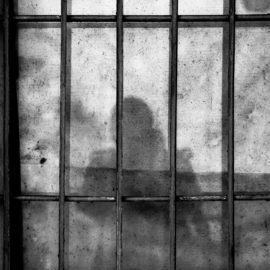

This article is an excerpt from the Shortform summary of "The Case for Christ" by Lee Strobel. Shortform has the world's best summaries of books you should be reading.
Like this article? Sign up for a free trial here .
Is there any evidence that Jesus existed? What kind of evidence, and how reliable is it? Is there any proof Jesus was a real person?
Lee Strobel set to find the truth: is there evidence that Jesus existed? Strobel grapples with various pieces of evidence, talks to scholars, and works to raise objections to the idea that Jesus might be real. In the end, he comes up with proof Jesus existed?
Find out more about whether or not there is evidence that Jesus existed, and what it means for Christianity.
Is There Evidence that Jesus Existed?
At the culmination of his investigation, Strobel locks himself in his home office to review everything he’s learned, searching for proof Jesus existed, and proof Jesus was a real person. Through his interviews and research, he’s established the following:
1. The biographies of Jesus (the gospels) can be trusted.
Whereas Strobel once thought the gospels were legends concocted by biased authors, his conversation with Blomberg confirmed that the gospels bear all the markings of trustworthy eyewitness accounts. This is proof that Jesus was a real person.
2. The biographies of Jesus stand up under examination.
That the gospels harmonize on the major points while diverging on minor ones suggests that (a) the authors are reliable and (b) the overall contours of Jesus’s story are factually accurate. Also, the early church couldn’t have thrived in Jerusalem—as it did—if the gospels had been exaggerated: everyone would have known the disciples were lying. But is this enough proof Jesus existed?
3. The text of Jesus’s biographies hasn’t been amended or adulterated by later authors.
Strobel’s interview with Bruce Metzger confirmed that the documents on which the New Testament is based date to an extremely early period in the church and are authentic.
5. Secular sources attest to Jesus’s existence.
There is more historical evidence that Jesus existed than for many historical personages whose reality we take for granted. Secular sources attest to Jesus’s ability to perform miracles, his crucifixion, and his early followers’ belief in his Resurrection.
6. The archaeological record corroborates Jesus’s biographies as well.
No archeological finding has disproved the New Testament, and Luke’s gospel has proven especially accurate, with references to geographical and cultural landmarks later confirmed by archaeological discoveries. This is further proof of Jesus Christ.
7. The historical Jesus is the same as Jesus Christ.
The Jesus Seminar has attempted to distinguish between a naturalistic Jesus and the mythological Jesus featured in the gospels, but its scholars rely on a number of specious sources to make their case. The evidence that Jesus existed for the gospels’ account is far more robust and convincing than for the Jesus Seminar’s theories.
8. Jesus believed he was the son of God.
Some skeptics have argued that Jesus didn’t actually believe he was the Messiah prophesied in the Old Testament. However, the numerous references Jesus makes to his own provenance and deity confirm he did in fact believe he was the Christ, sent to redeem the world.
9. There is no evidence of Jesus Christ to suggest Jesus was mentally disturbed.
Those with paranoid schizophrenia or other mental illnesses exhibit an array of symptoms beyond delusions of grandeur, including antisociality and trouble expressing emotion. Jesus exhibited none of these symptoms, and he supported his claims of divinity by performing independently verified miracles.
10. Jesus exhibited all the traits of God.
Further proof of Jesus Christ is his divine traits. Although some believe Jesus voluntarily limited his divine powers when he was incarnated, the New Testament shows that he possessed all the attributes of deity, including omniscience, omnipresence, and omnipotence.
11. Unlike claimants before or since, Jesus matched all the attributes of the Messiah.
Old Testament prophets made a number of predictions about the identity of the Messiah, including minor details like his place of birth and whether he would be buried with no broken bones. The odds that someone could match these prophecies by chance is infinitesimal. Jesus, of course, fit these predictions completely.
12. Jesus died on the cross.
Skeptics of the Resurrection have attempted to explain away Jesus’s “rise” by claiming he never actually died on the cross. Detailed medical analysis of Jesus’s brutal beating before the crucifixion, as well as the damage done by the crucifixion itself, can’t but conclude that Jesus was dead when he was entombed. This is evidence that Jesus existed at one point.
13. Jesus’s tomb was empty.
Is this evidence of Jesus Christ? The relevant canonical sources for the empty tomb—the gospel of Mark and the creed in 1 Corinthians—have been dated to within a matter of years of Christ’s Resurrection; thus it’s highly unlikely their accounts are the product of legend. Skeptics at the time implicitly accepted that the tomb was empty, and the fact that the canonical accounts describe women discovering the empty tomb is a testament to the accounts’ reliability: If the New Testament authors were making the whole thing up, they would undoubtedly have had men discover the empty tomb (women’s testimony wasn’t admissible in the Jewish courts at the time).
14. Jesus appeared to witnesses after his death.
There are many witnesses, adding more proof of Jesus Christ. The early-authored book Acts contains references to Jesus’s appearance to people after his death, and the gospels describe encounters Jesus’s followers and others had with Jesus. There is also a wealth of circumstantial evidence of Jesus Christ that corroborates the biblical account of the resurrection, including the disciples’ martyrdom and the remarkable speed with which Jews converted to Christianity. This can all be taken as evidence that Jesus existed.

———End of Preview———
Like what you just read? Read the rest of the world's best summary of Lee Strobel's "The Case for Christ" at Shortform .
Here's what you'll find in our full The Case for Christ summary :
- How an atheist lawyer-journalist researched Christ and began believing
- The key arguments against the existence of Christ, and why they don't hold up
- How to make up your own mind about whether Christ existed







not saying much here. you state only (time and time again) that such and such “is proof that Jesus existed” but you provide no examples of actual proof, even sometimes stating that someone else’s proof that Jesus did not exist (which could not be correct) is proof that Jesus existed. This is a logical error. It cannot actually be proven, for example, that Jesus died on the cross, or was even ever in that tomb, as there is no actual proof for these statements outside the New Testament. And you cannot simply “prove” the existence of Jesus by citing the Bible, which, I’m sure you know, has many flaws in an of itself. Most notably for this argument the identicalness of the all the gospels except John.
On the other hand, there is a host of logical evidence out there that point to the non-existence of Jesus. however, MOST Bible scholars believe that Jesus DID exist. Fine. Lets start there.
How do christians then conclude that he was a god, and the son of God in the wake of at least 30 other gods who were born on december 25…to virgins… did miracles … were later crucified … and three days later rose from the dead???
Now i know that most christians now correctly accept that Jesus was not born on Dec. 25, but you see where I’m going with this … Right?
Lets take the official acceptance of Christianity by the Romans (Constantine – c 325 AD). BEFORE the adoption of christianity, The official god of the Romans was Mithras, who was also born on Dec. 25… to a virgin… did miracles…was crucified…rose from the dead. Also Mithras was born in a cave and was visited my three magi. You get the point.
Other gods fitting Jesus description…
Krishna
Buddha
Dionysus
Horus and Osiris
Hercules
…And the list goes on and on.
I am only asking because I really want someone to make sense of all this astounding evidence … FACTUAL evidence.
I need more than the same old “Jesus is God because the Bible says so” argument.
Actually, Krishna and Buddha do not fit the description of Christ and neither did Gautam Buddha refer to himself as a deity.
Krishna is the eighth son of देविका (Devika) and was allegedly conceived by “mental transmission”. However, the only Vedic scriptures that assert to such claims are scriptures that were forged after the 8th century. And mental transmission doesn’t essentially mean that Devika was a virgin. Devika had already conceived seven others before Krishna was born, none of which claim to be non-sexual.
Gautam Buddha was not born of a virgin, I’m not even sure where you get such an astonishing view. Buddhism does not believe in God, Buddhism is irrelevant to this topic.
i agree wit you. he is too funny!
I committed a typo in my previous reply, the proper spelling for Krishna’s mother is Devaki देवकी
The bible doesn’t say that Jesus was born December 25th. That is just the day that has been chosen to celebrate his birth.
Are you aware of the number of prophecies in the bible have been fulfilled? Especially the number that were fulfilled by Jesus?
I read the alledged arguments you gave that supposedly proves, beyond any doubts, that Jesus actually existed. But all your proof is “The writers of the gospel books said it, so it is True that Jesus existed”.
WHERE IS THE PROOF???
Jesus is mentioned in other historical writings. Just do a search for that.
It’s in the heart. Everything that is true is not always seen. You can’t see beyond the quark but you know something is there. You just choose not to believe and you’ll have to take that up with God.
You have no scientific proof of anything other than your ‘wish or want it to be true’.
Make it easy on your self:
Read the first two commandments.
This will tell you who God is and it will state clearly that there is only one.
God never shared his diety with anyone and he can be an angry and jealous God.
Next read the Book of Hosea 13.4
Here the one true God tells you who the savior is.
Once you hear Gods words as to who the savior is it is your choice to follow God and the
True Savior or continue to turn your back on God.
You really have to be silly to believe in Jesus.
The Roman Catholic church states clearly they wrote the gospels. They state that priests wrote them, not the so named authors MMLJ. So the gospels are of no value to anyone.
Read the published information about Tammuz, ruler of Babylonia.
His death and the celebration of the Pig.
If you change only a half dozen words you’ll see the Christ story.
These Mythras are all over history.
Jesus is authenticated by historical, spiritual, physical and supernatural evidence.
Historical: There are witnesses and associated witnesses as well as Christians, Romans, Jews, 3 1st century historians, government officials of Jesus’ time that wrote about Jesus and or his followers, Christians. See Cold Case Christianity (website, youtube) for demonstration of proof. Documents from that era exist.
Spiritual: Jesus, since His crucifixtion and Resurrection, has touched the lives of billions of people. many bear witness to spiritual events within their lives. If you ask a holy spirit led person (charismatic), you will find out they have experienced what are called “gifts of the Holy Spirit”. Talk to a pastor, priest or charismatic prayer person, and they can explain.
Physical: In addition to archology support (see Titus Kennedy for exhibits) for the early Christian experience and Biblical confirmation, we have an unique burial cloth from Jesus’ death and Resurrection. Matches testimony of the Gospels. The cloth is a full length image of a cruxified man, front and back on the interior of the cloth, next to the body. The cloth bears pollen, limestone from the Jerusalem. The weave is 1st century weave. And the cloth bears a fragment image of a Pontius Pilate coin. All demonstrating the man call Jesus. The fact that the image appears to be caused by radiation from the body (recorded in Bible as transfiguration) is evidence of a transfiguration event…associated with a supernatural event. See Shroud Research Network with scientific presentations.
Supernatural. Fullfilment of prophecies that Jesus was coming. Prophecy dated hundreds of years before time. See Cold Case Christianity presentation on fulfillment of prophecy. Shroud of Turin is a supernatural evidence, because after more than 1100 science tests, no “natural” method of making the image has succeeded in testing.
Supernatural: See healing by Judith MacNutt at Christian Healing Schools. 4 decades of spiritual, emotional and physcial healing.
Supernatural: See visits by Jesus’ Mom…the Virgin Mary. At Fatima, Guadalope, Egypt, etc. Many documented and witnesses, along with miracles.
The historicity of Jesus of Nazareth is well-attested; in addition to the reliable gospel accounts in Scripture, numerous secular authors within 150 years of his life mention him. For example, Thallus, Mara Bar-Serapion, Phlegon, Suetonius, Lucian of Samosata, and Celsus all reference Jesus.1
(1. J. Warner Wallace, “Is Is There Any Evidence For Jesus Outside The Bible?” ColdCaseChristianity.com. Oct. 30, 2017. https://coldcasechristianity.com/writings/is-there-any-evidence-for-jesus-outside-the-bible/ )
In addition, the famous jewosh historian Josephus affirms that Jesus was called the Christ and that his brother was James .2,
(2. Josephus, Antiquities, 20.9.1.)
Pliny the Younger notes that Christians worshipped Jesus “as a god,”.3
(3. Pliny, Letters, 10.96-97)
and Tacitus wrote that Christ, “suffered the extreme penalty during the reign of Tiberius at the hands of one of our procurators, Pontius Pilatus.”.4
(4. Tacitus, Annals, 15.44.)
In short, no serious historian – Christian or atheist – questions the existence of Jesus of Nazareth. In addition to these direct references, there are numerous archaeological discoveries that affirm and illuminate details about Jesus’ life as recorded in the gospels. Here are some discoveries related to Jesus.
1. The Tomb of Jesus Christ
There are three tombs in Jerusalem purported to be the final resting place of Jesus. The site with the oldest attestation to being the tomb of Christ lies within the Church of the Holy Sepulchre. Archaeological research has demonstrated that this site was a Jewish cemetery in an ancient limestone quarry outside the walls of Jerusalem at the time of Jesus’s death.23 This aligns with the biblical description of the tomb in which Jesus was laid being outside the city walls (Mt 27:39, Heb 13:12).
Eusebius wrote that the emperor Hadrian (2nd century) built a huge platform over the quarry and constructed a temple to Venus/Aphrodite over the tomb of Christ.24 Jerome affirmed this and said that the temple stood there until the time of Constantine.25 Eusebius also wrote that, during his lifetime (4th century) the emperor Constantine destroyed the Roman temple and excavated through the fill of Hadrian’s platform until he found the tomb of Christ. He then had a new structure (the Church of the Holy Sepulchre) built around the tomb.26 The Church of the Holy Sepulchre has been restored and rebuilt several times since its construction.
During recent restorations to the edicule (the shrine that surrounds the remains of the ancient tomb), experts removed the limestone slab that covered the burial bed of the tomb for the first time in almost 500 years. Mortar samples from the structure surrounding the tomb were tested, confirming it was built in the mid-4th century and then rebuilt crusader chapel in the middle ages, affirming the ancient written history of the site. Archaeologist John McRay summarized: “Although absolute proof of the location of Jesus’ tomb remains beyond our reach, the archaeological and early literary evidence argues strongly for those who associate it with the Church of the Holy Sepulchre.”27
(24. Eusebius, Life of Constantine, 3.26.)
(25. Jerome, Letter 58, 6.120.)
(26. Eusebius, Life of Constantine, 3.27-33.)
(27. John McRay, Archaeology and the New Testament. (Grand Rapids: Baker Academic, 1991), 216.)
2. The Nazareth Inscription
The Nazareth Inscription is an edict from Caesar inscribed on a marble slab which imposes a death penalty in Israel for anyone caught moving bodies from family tombs, and specifically “sepulcher-sealing tombs,” such as the one Jesus was buried in. It was acquired by Wilhelm Froeher in 1878 who recorded that it came from Nazareth and eventually translated and published by French scholar M. Franz Cumont in 1930. The Greek inscription likely dates to the reign of Claudius (41-54 AD), and appears to be directed at a Jewish audience. It’s quite extraordinary that Caesar would feel the need to make such a pronouncement; while it was common in antiquity for grave robbers to plunder tombs to steal the valuables, they never the bodies. Of course, Scripture records that the Jewish leaders deliberately spread the lie that Jesus’ disciples had stolen the body (Mt 28:13-15) to explain the fact that the gave was empty after Jesus rose from the dead. This report likely reached the Roman emperor, who would have seen the new Christian sect as a dangerous, anti-Roman movement.
A recent analysis of the marble tablet the Nazareth inscription is made of determined it likely came from the Greek Island of Kos (Cos). The authors of the study have suggested a different historical context, although, as historian, Dr. Clyde Billington, pointed out in a recent interview, there are serious problems with their hypothesis. After studying the Nazareth Inscription in-depth, he concludes: “The context of the Nazareth Inscription clearly proves that it was written for Jews and not gentiles, and that it was almost certainly issued by Claudius in response to the story of the resurrection of Jesus of Nazareth, King of the Jews.”28
(28. Clyde Billington, “The Nazareth Inscription: Proof of the Resurrection of Christ?” Associates for Biblical Research. https://biblearchaeology.org/research/new-testament-era/4658-the-nazareth-inscription-proof-of-the-resurrection-of-christ )
3. Heel bone of a crucified man
There is ample literary evidence for Roman crucifixions (ie. Josephus, Plautus, Senneca). Archaeological evidence for Roman crucifixion was unearthed in 1968. That year, a construction crew accidentally dug up several tombs in northeast Jerusalem. Inside the tombs were several ossuaries, including one inscribed with the name Jehohanan (Yehohanan), which contained skeletal remains of an adult male, including his heel bone with a nail still embedded in it. The anthropologist who examined the remains determined that Jehohanan had been in his twenties when he was crucified in the first century (ca. AD 7-66).21 Further study has revealed that Jehohanan had likely been crucified with a leg on either side of the cross and the nail driven in sideways through his heel.22
(21. Nico Haas, “Anthropological Observations on the Skeletal Remains from Giv’at ha-Mivtar,” Israel Exploration Journal 20, no. 1 (1970), 38–59.)
(22. John J. Davis, “Rethinking The Crucified Man From Giv’at Ha-Mivtar.” Bible and Spade. Vol. 15. No. 4 (Fall 2002). Online: https://biblearchaeology.org/new-testament-era-list/4185-rethinking-the-crucified-man-from-givat-hamivtar )
The heel bone of the crucified man affirms the description of Jesus’ crucifixion in Scripture. Furthermore, it counters the objections of critics who have argued that Jesus would have been thrown into a mass grave for criminals rather than have been dignified with a proper burial. We now see that the loved ones of a crucified victim could retrieve the body and prepare it for burial it in a family tomb.